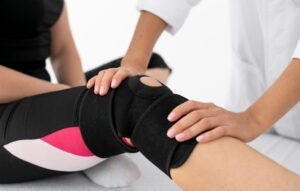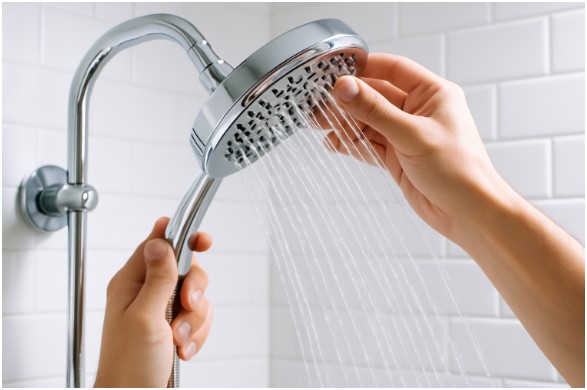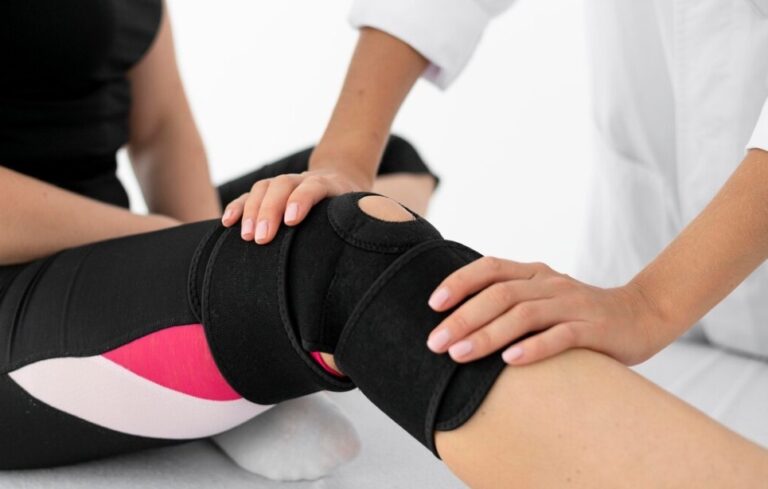I’ll admit it—I once stood under a shower that felt like being sprinkled by a timid garden hose. You know that moment when you just want a powerful spray to wash away your stress, and instead, it feels like the water is apologizing?
That was me last year. I finally decided to figure out how to increase water pressure in shower—and turns out, there’s a lot more to it than twisting the knob harder.
Over time, I’ve tested every method, from vinegar soaks to calling in plumbers. If you’ve been battling weak water flow, grab your towel—this guide is all you need.
Why Is My Shower Pressure So Low?
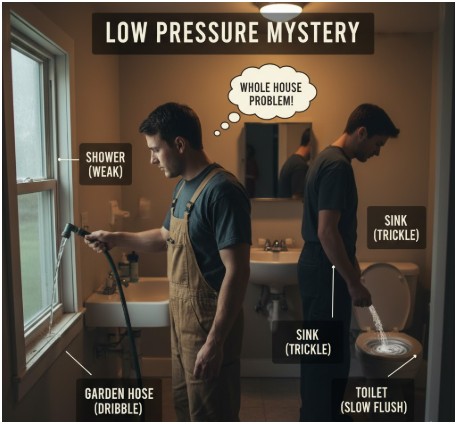
Before fixing anything, I had to understand what was really going on. Low shower pressure can happen for several reasons.
Sometimes, the problem lies in your showerhead itself. Mineral deposits can block tiny holes, especially if you have hard water.
Other times, it’s something bigger, like a partially closed valve, a faulty pressure regulator, or even outdated plumbing.
The key is figuring out whether it’s just your shower or your whole home that’s affected. I turned on the sink, the garden hose, and even flushed the toilet to see if the problem was widespread—and it was. That told me the issue wasn’t just my showerhead.
How to Increase Water Pressure in Shower: Where to Start
The good news? You can often fix low shower pressure without spending much money—or calling a plumber.
Clean the Showerhead
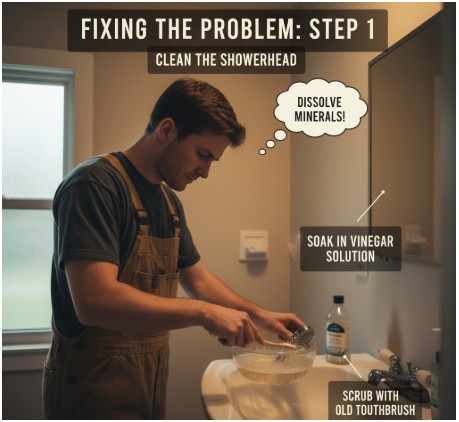
I started by removing the showerhead and soaking it in a vinegar solution. A mix of equal parts vinegar and warm water dissolves mineral buildup. After a 30-minute soak, I scrubbed it with an old toothbrush and rinsed it thoroughly. The difference was noticeable almost instantly.
Remove the Flow Restrictor
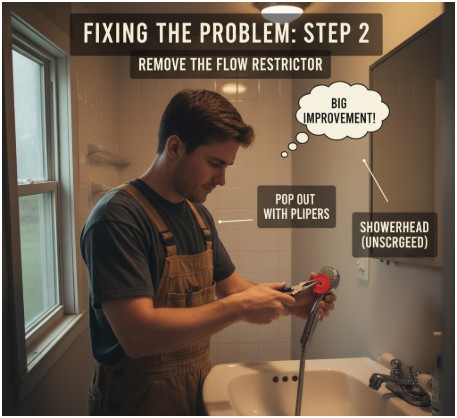
Most newer showerheads come with a built-in flow restrictor—a tiny plastic disc designed to conserve water. While eco-friendly, it can make your shower feel weak. I carefully popped mine out with pliers (after unscrewing the head, of course). The improvement was huge.
Check for Leaks
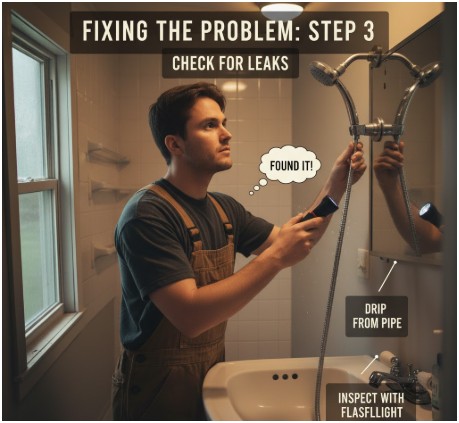
Next, I inspected the pipes and connections. Even a small leak can lower pressure dramatically. A quick look around the shower arm and valves can reveal drips you might have missed. Fixing those sealed my first victory against weak water flow.
Limit Water Usage
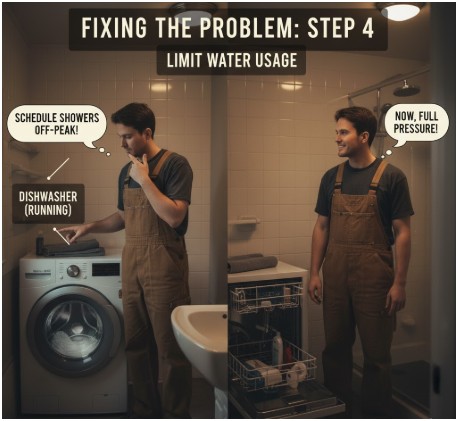
Sometimes, low pressure isn’t your plumbing’s fault—it’s your timing. Running the washing machine or dishwasher while showering can reduce available water. I now schedule showers during off-peak times to enjoy consistent pressure.
What If Quick Fixes Don’t Work?
If cleaning, removing restrictors, and fixing leaks don’t solve the issue, it might be time to consider advanced options.
Install a High-Pressure Showerhead
This was my next move. High-pressure showerheads are designed to boost water flow even in homes with naturally low pressure. They work by optimizing spray patterns and using pressure chambers to push water out faster. The upgrade was well worth it—affordable, easy to install, and instantly satisfying.
Add a Shower Pump
When I lived in a house with a gravity-fed water system, I installed a shower pump. It amplified the flow to an incredible level—almost spa-like. However, this one’s not a DIY job. A professional should install it to ensure it matches your water system safely.
Adjust or Replace the Pressure Regulator
Every home has a pressure-reducing valve (PRV) near the main water line. If it’s malfunctioning or set too low, it can choke water flow. A plumber can tweak or replace it to restore healthy pressure levels throughout your house.
| Solution Type | DIY or Professional | Estimated Cost | Best For |
| Clean Showerhead | DIY | $0–$5 | Minor buildup |
| Remove Flow Restrictor | DIY | Free | Low-flow showerheads |
| Fix Leaks | DIY | $10–$50 | Localized pressure drops |
| High-Pressure Showerhead | DIY | $20–$60 | Weak pressure systems |
| Install Shower Pump | Professional | $250–$600 | Gravity-fed systems |
| Replace Pressure Regulator | Professional | $150–$400 | Whole-home pressure issues |
When Should You Call a Professional?
If you’ve done everything and your shower still feels weak, it’s time to bring in an expert. Persistent low pressure could mean corroded pipes, outdated plumbing materials, or a major blockage in your main water line.
A plumber can run diagnostic tests to pinpoint the cause, which saves you time (and endless frustration). Sometimes, upgrading old plumbing to larger-diameter pipes is the only lasting solution, especially in older homes.
How Do I Maintain Strong Shower Pressure?

I learned that keeping your water pressure strong isn’t just about fixing it once—it’s about maintaining it. I now clean my showerhead monthly and check for slow leaks every few weeks.
If you’re using a pressure pump, ensure it’s serviced yearly. And always monitor any sudden drop in pressure—it could signal a new leak or a failing valve. Consistency is key to avoiding another “garden hose” moment.
FAQs About How to Increase Water Pressure in Shower
1. Why is my water pressure suddenly low in just the shower?
It’s usually a clogged showerhead or flow restrictor. Remove and clean the showerhead using vinegar, then check the filter screen for debris. If the rest of your house has good pressure, the issue is likely confined to that one fixture.
2. Can a new showerhead really make a difference?
Absolutely. High-pressure showerheads can dramatically improve your experience. They’re inexpensive, easy to install, and designed to enhance water flow without increasing your water bill.
3. How do I check if my home’s water pressure is too low overall?
You can buy a pressure gauge at any hardware store. Attach it to an outdoor faucet—ideal pressure is typically between 40 and 60 PSI. If it’s below 40, you might need a plumber to adjust the pressure regulator.
4. Is it okay to remove the flow restrictor from my showerhead?
Yes, but do it responsibly. Removing it may slightly increase water usage, but it can also vastly improve comfort. If you live in an area with water restrictions, consider a high-efficiency high-pressure showerhead instead.
The Shower Power Comeback
After weeks of frustration, I finally turned my sad drizzle into a strong, satisfying shower stream. It felt like a victory worth celebrating.
Learning how to increase water pressure in shower taught me that small adjustments—like cleaning buildup or removing a tiny plastic disc—can make a huge difference.
So next time your shower feels weak, don’t rush to call a plumber. Try the simple steps first. A little cleaning, tweaking, and maintenance can turn your shower from sluggish to sensational. Trust me—your mornings will thank you.

